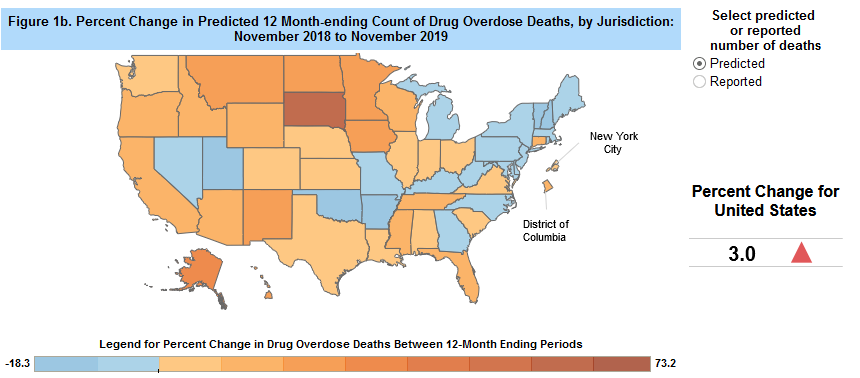Forced Opioid Tapering Is Risky and Unethical
/By Roger Chriss, PNN Columnist
Prescription opioid use has come way down from its peak in 2012. Fewer people receive an initial opioid prescription, pill counts have been lowered, and more people are being taken off opioids. The American Medical Association recently reported that there was a 37% decrease in opioid prescribing from 2014 to 2019.
The goal of this was to reduce the harms associated with opioid pain medication amid an ongoing drug overdose crisis. But there is no justification for forced opioid tapers. As PNN reported last year, outcomes for patients taken off opioids are not necessarily good. And despite an ongoing focus on reducing prescription opioid use, there is still no established deprescribing strategy or method.
A new study looked at a dozen randomized controlled trials for deprescribing opioids for chronic non-cancer pain. Researchers found that reducing or discontinuing treatment did not reduce opioid use in the intermediate term. It also didn’t increase the number of patients who stopped taking opioids.
After looking at the evidence, the authors of the systematic review concluded that the were unable to draw “firm conclusions to recommend any one opioid-analgesic-deprescribing strategy in patients with chronic pain."
Ethically Unjustified
But even if we knew how to taper patients on prescription opioids, it would still not be ethical to do so. Forced tapers offer relatively few benefits for the patient and may carry serious harms. Policies promoting opioid tapering have nonetheless proliferated in recent years, including one in Oregon that was tabled after a public outcry.
In a recent paper in The Journal of Law, Medicine & Ethics, physicians Stefan Kertesz, Ajay Manhapra, and Adam Gordon argued against the forced tapering policies being promoted by public agencies.
“Neither the 2016 Guideline issued by the Centers for Disease Control and Prevention nor clinical evidence can justify or promote such policies as safe or effective,” they said.
Specifically, Kertesz and his colleagues said “the provider is trained never to treat a patient as merely a means to an end.” In other words, involuntary tapers with the goal of satisfying prescribing metrics or state-mandated statistics are unethical.
A more detailed analysis of the ethics of deprescribing is taken up by Travis Rieder, PhD, author of the book, “In Pain: A Bioethicist’s Personal Struggle with Opioids.” In a new commentary in the AMA Journal of Ethics, Rieder concludes that nonconsensual tapering is “clinically and ethically wrong” because it exposes so-called legacy patients who are dependent on opioids to uncontrolled pain and withdrawal.
“Forcibly tapering otherwise stable patients off high-dose, chronic opioid therapy reveals that this practice might have an effect that is the opposite of what public health is calling for: it may be a harm expanding intervention, exposing those who have long received opioid medications variously to worsened pain, withdrawal, social instability amidst untreated dependence, or loss of medical care relationships,” Rieder said.
“Taking such risks into account, continuing to prescribe high-dose opioid therapy for a legacy patient does not clearly constitute ethical or legal misprescribing.”
‘Large-Scale Social and Medical Experiment’
There is little doubt that prescription opioids involve serious risks and lead to harm for some patients. In some urgent cases, a forced taper may be justifiable in light of specific risks to an individual. But in general, forced tapers not only introduce new risks and create new harms, but they also damage the doctor-patient relationship and deny the patient’s status as an individual.
Stanford pain psychologist Beth Darnall, PhD, calls forced tapering a “large-scale social and medical experiment” being conducted without sufficient evidence on how to do it the right way.
“You may have a patient that has been on a stable dose of opioids for 10 years, and then you start de-prescribing. We are now exposing them to new risks for opioid overdose, for suicidality, for actual suicide, for withdrawal symptoms, for increased pain,” Darnall told The Guardian.
It's worth noting that both Darnall and Rieder were recently named to a new CDC panel that will advise the agency as it prepares to update its 2016 opioid prescribing guideline.
Physicians already have a wide variety of tools to reduce risk and improve outcomes without resorting to the ethically unjustifiable approach of forced tapers. It’s time to emphasize those tools and underscore the ethical importance of patient outcomes.
Roger Chriss lives with Ehlers Danlos syndrome and is a proud member of the Ehlers-Danlos Society. Roger is a technical consultant in Washington state, where he specializes in mathematics and research.








